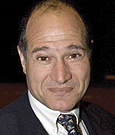A new analysis of the multiple myeloma Intergroupe Francophone du Myelome (IFM) 2005-02 trial showed that lenalidomide (Revlimid) maintenance prolongs progression-free survival after stem cell transplantation, but does not improve overall survival.1 This is possibly attributed to the shorter survival time after first disease progression than is observed in patients receiving placebo, the investigators suggested.
The study, presented by Michel Attal, MD, of the Centre Hospitalier Regional Universitaire Hôpital Purpan in Toulouse, France, was met with some surprise by attendees at a session during the 2013 American Society of Hematology (ASH) Annual Meeting (see sidebar).
The meaning of these findings, according to Dr. Attal, is that “the benefit of lenalidomide maintenance is an early benefit, occurring in the first 2 years.” He suggested that a “late effect” occurs with continued lenalidomide treatment, which induces the emergence of drug resistance.
“We must be cautious, but I think something is happening that looks like what we, in the old times, called multidrug resistance,” he said.
Study Details
IFM 2005-02 was a randomized, placebo-controlled phase III trial that investigated the efficacy of lenalidomide maintenance after transplantation in 614 myeloma patients younger than age 65 who had not shown disease progression after first-line autologous stem cell transplantation. Patients were randomly assigned to continuous lenalidomide maintenance (10–15 mg/d) or placebo until disease progression. The initial findings were reported after a median follow-up of 45 months.2
The initial analysis found a 50% improvement in progression-free survival but no advantage for overall survival. The investigators had two hypotheses for this discrepancy: insufficient follow-up and therefore a low number of reported deaths, or worse outcomes after progression in the lenalidomide arm, possibly due to clonal selection and/or induced resistance with lenalidomide therapy.
“We felt that a follow-up analysis was required to answer this,” he said. The data cutoff for this subsequent analysis was November 2013, which was at 67 months postrandomization and 77 months postdiagnosis. No patient in the placebo arm received lenalidomide before progression, but about half of the patients underwent a second transplant sometime in their disease course, he indicated.
New Analysis Looked Closely at Progression
In the new analysis, median progression-free survival from randomization was 46 months with lenalidomide and 24 months with placebo (P < .001) but median overall survival was still not significantly improved with maintenance, despite the longer 77 months of follow-up. Median overall survival was 81 and 82 months, respectively (P = .80), Dr. Attal reported.
“The discrepancy between progression-free and overall survival was still present,” he said. “We believe the poor outcome after progression for patients in the lenalidomide maintenance group is the most reliable hypothesis.”
Describing the “poor outcome after progression” in the lenalidomide maintenance arm, Dr. Attal called attention to the median second progression-free survival point, which was the time from the first progression to the second progression. In this scenario, the placebo arm was superior, with median second progression-free survival of 24 months vs 13 months with lenalidomide (P = .001).
About 50% of patients received an immunomodulatory drug–based regimen upon first progression, and in this group, median second progression-free survival was 19 months with placebo and 8 months with lenalidomide (P = .003). For the 25% of patients receiving a bortezomib (Velcade)-based regimen, median progression-free survival was 8 and 9 months, respectively (P = .28). For the 25% of patients who received no new agents, median progression-free survival was 30 months vs 18 months, respectively (P = .06).
Dr. Attal suggested that the reduced second progression-free survival with maintenance may be due to clonal selection or secondary resistance, suggested by the [median progression-free survival] in the [immunomodulatory drug] group and the “no new agent group.”
Second primary malignancies totaled 21 (7%) in the placebo arm and 37 (13%) in the lenalidomide arm, for a cumulative incidence of 20.6 per 1,000 patient-years with placebo and 33.7 with lenalidomide—a statistically significant difference (P = .025). The lenalidomide cohort also had more severe neutropenia (51% vs 18%).
No Treatment Recommendation
While Dr. Attal declined to make a treatment recommendation based on the data, he did agree with Sundar Jagannath, MD, Director of the Multiple Myeloma Program at Mount Sinai Hospital, New York, that it helps to view the findings for their relevance in elderly as compared to younger newly diagnosed patients. An overall survival benefit has been shown for lenalidomide maintenance in older patients, including the FIRST trial presented at an ASH Plenary Session (see article here), he noted.
“Elderly patients spend about 70% of their myeloma life during their first-line treatment. If you can prolong this [remission] in the first line, you can probably improve overall survival,” he predicted. ■
Disclosure: Drs. Attal and Jagannath reported no potential conflicts of interest.
References
1. Attal M, Lauwers-Cances V, Marit G, et al: Lenalidomide maintenance after stem-cell transplantation for multiple myeloma: Follow-up analysis of the IFM 2005-02 trial. 2013 ASH Annual Meeting. Abstract 406. Presented December 9, 2013.
2. Attal M, Lauwers-Cances V, Marit G, et al: Lenalidomide maintenance after stem-cell transplantation for multiple myeloma. N Engl J Med 366:1782-1791, 2012.


